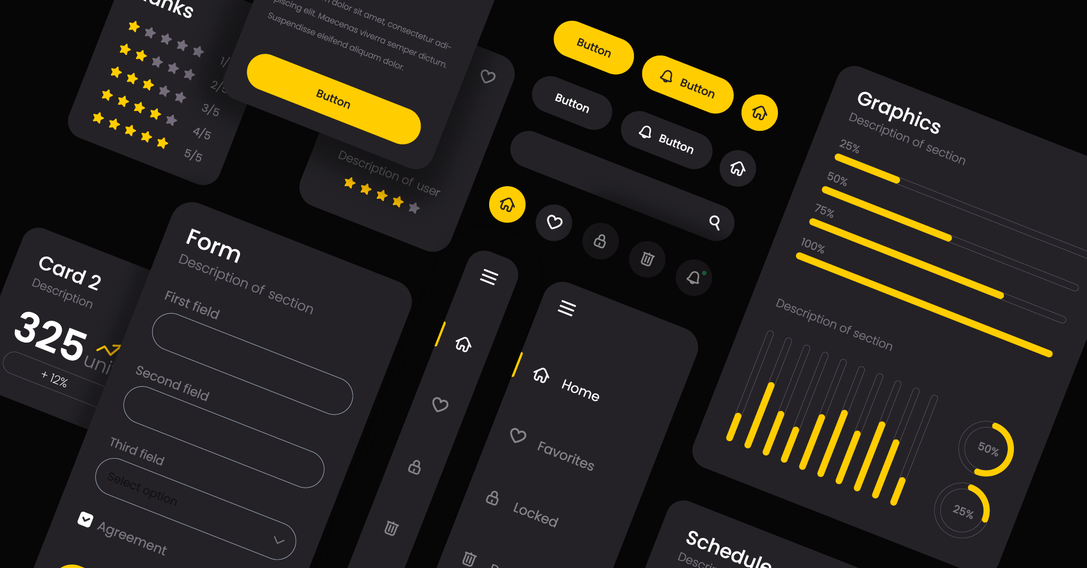7 min
October 30, 2025
Horror Stories from the Dev Room and Beyond — A Guide to Surviving E-commerce Nightmares
Halloween is a time when we celebrate the dark and the disturbing. In the world of development and IT Consulting, it turns out we have our own demons. They don't wear chains or scare with screams; instead, they manifest as vague briefs, chaotic code interventions, or projects returning from the "afterlife" after months of silence. We've collected a few real "horror stories" from our kitchen to show that even the scariest projects can be tackled. And most importantly: we'll show you how we found the light at the end of the tunnel. We've dusted off our magical toolkit and are ready to share the Counter-Spells!
Listen to the audio version of this article.
Chapter I: The Curses of Specification and Requirements (Expectation Management)
Many e-commerce projects, before they even reach the servers and become a measurable success, grapple with a primordial chaos that often turns out to be the biggest budgetary monster.
We are talking about improperly defined goals, a lack of precision in the brief, and constant changes in direction—fundamental errors made at the planning stage. This is where the most dangerous and expensive curses are born. If the foundations are shaky, no developer can save the project from collapse.
1. The Fog of Indefinition
We have often seen projects get stuck in the Fog of Indefinition. Requirements are imprecise, business goals are unclear, and Scope Creep (uncontrolled expansion of scope) becomes an everyday occurrence. Changes in assumptions are natural, but when the client cannot precisely define what they want to achieve, the process turns into an endless nightmare.
Counter-Spell: The foundation of success is the Discovery Workshop—an intensive work phase where we "reveal" and precisely define all goals, functionalities, and priorities together with the client. Only a precise, rigid specification allows for the creation of a realistic schedule.
2. The Detour Trap
Data specialists often face The Detour Trap. Sometimes clients, aiming to improve a process, ask for a specific tool or data extract (e.g., "Give me a CSV export of all sessions from the last month!"). This specific request is sometimes confused with the true business goal (which is, for instance, "I want to understand what to improve in the sales funnel"). As a result, specialists and partners must first diagnose and understand this hidden goal to avoid delivering a solution that is technically correct but ineffective from the perspective of the company's needs.
Counter-Spell: Always apply the "5 Whys" principle. Before diving into the work, ask the question: "What decision will you make based on this data?". This way, you will reach the true need and deliver an effective solution, not just a file invented by the client.
3. Requirements Mutation (Change on the Home Stretch)
The true thrill for a Project Manager occurs when the project is already in the testing phase and... a large, new functionality or a new idea emerges. Requirements Mutation at the last minute can burn the schedule and budget in a second, forcing developers to take several steps back.
Counter-Spell: Introduce a formal Change Request Process. Every new feature that changes the project scope must be formally accepted, which involves a new valuation and deadline. A strong role for the Project Manager, who monitors the specification, is absolutely crucial here.
Chapter II: The Demons of Vision and Aesthetics (UX/UI and Concept)
Sometimes the biggest challenges do not lie in the code but in human perception of beauty and subjective taste.
4. The Loch Ness Monster, or the Client Saying 'Make it nice'
We all want our websites or applications to be attractive. The problem arises when the client's expectations boil down to "it must be nice" or "I want the WOW effect." "Nice" is unfortunately a subjective opinion, not a specification, and each of us has different ideas about what exactly it should mean. Without objective criteria, the project becomes an endless cycle of subjective revisions that move us away from implementation.
Counter-Spell: Use visual briefing (mood boards, benchmarking) and prototyping to bring subjective concepts down to concrete UX/UI solutions. Then, defend them with data and usability principles, not subjective feelings.
5. The Leader of the Vampire Herd (The Alpha Personality)
Sometimes, a person with such a strong personality appears in the client's decision-making process that their subjective preferences (e.g., favorite color, element arrangement, sentiment toward the old layout) can overshadow the conclusions drawn from UX Research and market analysis. Such decisions, based primarily on intuition or taste rather than hard metrics, create the risk of halting progress and can undermine the effectiveness of the entire project in key areas, such as conversion.
Counter-Spell: Our best weapon in this case is objectivity — making decisions solely based on data (UX Research), A/B tests, and objective metrics, not personal preferences. Although the influence of a strong personality can be difficult, the key is arming oneself with facts: proposed changes should always be justified with professional, numbers-based arguments.
6. The Curse of the Always Green Background (Aesthetic Wars)
The UX/UI designer delivers a modern and accessible design in line with market best practices, but during the acceptance process, demands based on past styles or personal habits appear. We are dealing with the Curse of the Always Green Background when the client (or a colleague from another company) prefers solutions that are outdated from the point of view of usability and conversion, e.g., poor contrast, small font, or too high information density. Such a situation forces a departure from the standards of effective design.
Counter-Spell: Create a consistent Design System and refer to universal standards of accessibility (WCAG) and conversion. Your job is to prove why a given choice is good for the business, not just aesthetics—this is the only way to win the war for usability.
7. The Attack of Artistic Chaos (The Pixel Perfectionist's Curse)
It happens that the creative enthusiasm of the UX/UI designer generates solutions that are technically difficult, impractical, or very time-consuming to implement in a responsive and efficient way. The Frontend developer is then trapped between a magnificent vision and the necessity of delivering efficient code. The fight over that "one pixel" can consume hours of work.
Counter-Spell: Use the Design System as the "single source of truth" for both teams. Early Front-end workshops with UX/UI allow for verification of the technical feasibility of the most creative elements before they become an irreversible problem.
Chapter III: Developer Nightmares (Code and Maintenance)
When the project finally lands in the Dev Room, the ghosts of chaos appear, which only an experienced programmer can banish.
8. The Monster in the Code: The Revenge of the Meddling Dev Ops
Developers experience a nightmare when the code they worked on is changed in a way that violates the established architecture and project standards—like a work of Dr. Frankenstein, our Monster in the Code! This happens when an external team or another entity intervenes without a full understanding of the context and consequences. Fixing bugs and rebuilding system stability after such chaotic changes becomes a nightmare and can take significantly more time than implementing the new functionality itself.
Counter-Spell: Introduce rigorous Code Review for every piece of code and use Git (version control) as the sole, formal channel for changes. The key is establishing clear rules of access and responsibility for the code.
9. The Zombie Project: Return from the Afterlife
Imagine a project coming back to life after a long hiatus (e.g., a year). The team that created it is busy with other things, and the loss of context is total. Restoring a Zombie Project to a usable state (understanding the specifics, why certain decisions were made, etc.) often takes more time than working on a new project.
Counter-Spell: The best solution is to create Architecture Decision Records (ADR), which is documentation explaining why key architectural decisions were made. Most importantly, however, is writing clean code with excellent internal documentation, so the project is "self-explanatory."
Our Ways to Save a Project — Summary
In the world of e-commerce, occasional Horror Stories are inevitable, but they can be controlled. As you can see, all these nightmares have one common denominator: a lack of precise process, clear communication, and reliance on subjective feelings rather than data.
Our set of Counter-Spells are: Professionalism, Trust in the process, and Communication. We use them to turn chaos into efficiency.
Do you want your project not to become another horror story? Contact our IT monster hunters! We provide a process that will turn your project into a success, not a terrifying campfire tale.





